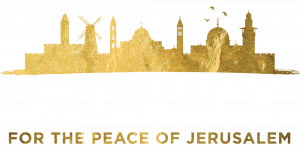The Six-Day War is the defining event of the puzzle that is the Israeli-Palestinian conflict. In order to really understand the last fifty-three years of Israel’s history and its relationship to the Palestinians regarding the peace process, one must understand what took place before, during, and right after the Six-Day War.
Here are some facts about the Six-Day War:
1. Leading up to the war, Israel’s relationships with her Arab neighbors were strained (to say the least).
Despite her best efforts, Israel could not make peace with her neighbors. In October of 1946, Foreign Minister Golda Meir addressed the United Nations General Assembly and challenged Arab leaders to meet with then Prime Minister David Ben-Gurion to negotiate a peace settlement. Egyptian President Gamal Abdel Nasser answered Meir’s address, claiming that his country would never recognize the Jewish State.[1]
A few years later, in 1963, the Arab League (an organization of Arab states founded in 1945), introduced the Palestinian Liberation Organization, or the PLO. The PLO was officially established in 1964 during a meeting of the first Palestinian Congress. The factions within the PLO all adhered to principles set in place by the Palestine National Charter, which called for Israel’s destruction.[2]
Eventually, the PLO began acting on its desire to destroy Israel and conducted a string of terror attacks against Israeli civilians between 1965–1967. Most of those committing the attacks were Palestinians from Jordan, the Gaza Strip, and Lebanon. The orders and logistical support, however, came from Cairo and Damascus—Israel’s neighbors were hostile.[3]
Then, in September of 1965, King Hassan II of Morocco secretly recorded a meeting between Arab leaders who were gathering at a hotel in Morocco. Hassan gave the recording to the Israelis, who learned that the Arabs were planning for war against Israel.
On top of the threat of impending war, the Syrian army began shelling Israeli farms and villages from the Golan Heights. Resistant to Israel’s creation of a National Water Carrier, Syria took it out on Israeli citizens. While Syrian attacks grew more frequent in 1965 and 1966, Nasser’s rhetoric became more antagonistic, making it clear that the Arab’s goal was “the eradication of Israel.”[4]
In April of 1967, Israel retaliated against Syria by shooting down six Soviet-provided fighter planes. As a result, the Soviets began spreading false information, telling the Syrians and Egyptians that Israel was amassing troops along its northern and southern borders. In response to this misinformation, the Syrians were prepared for war by May 18, while the Egyptians closed the Straits of Tiran on May 22. On May 30, King Hussein of Jordan signed a defense pact with Egypt. Syria, Egypt, Jordan, and Iraq, having formed an alliance, were ready for war.
The Israelis, knowing that their neighbors were preparing for war, decided to strike preemptively. On June 5, 1967, all but twelve Israeli Air Force planes flew to Egypt and bombed Egyptian airfields, destroying one hundred eighty fighter planes. Syria then attacked Israel, who in response attacked the Syrian and Jordanian air forces. The war had begun.
2. Israel gained triple the amount of territory it controlled before the war, including the Old City of Jerusalem.
In just six days of fighting, Israel gained triple its territory. On June 6 and 7, the Israeli army took back the Old City from Jordanian troops, who were originally commanded to hold as much territory as possible, but eventually retreated.
On June 9, the Israeli troops in the south captured the Sinai Peninsula from the Egyptians, while troops in the north captured the Golan Heights from the Syrians. In addition, Israel also gained the West Bank from the Jordanians.
With these new territories in their possession, Israel accepted a cease-fire on June 10, 1967.
3. UN Resolution 242 played, and continues to play, a significant role in shaping the current Israeli-Palestinian conflict.
In November 1967, the United Nations Security Council adopted Resolution 242. This resolution, formulated to promote peaceful relations between Israel and her Arab neighbors, gave Israel rights and obligations regarding the territories it captured during the Six-Day War.[5]
Resolution 242 sought to do three things:
- Establish “secure and recognized boundaries”[6]
- Create a foundation for peaceful relations between Israel and her Arab neighbors
- Deal with the refugee problem created by the war
Establish “Secure and Recognized Boundaries”
Up until the Six-Day War and the drafting of UN Resolution 242, Israel had no secure or official borders. Instead, Israel and her Arab neighbors were separated by armistice lines from 1949, the lines where the armies stopped in Israel’s War of Independence.[7] Resolution 242 ensured that Israel had the legal right to defensible borders and replace the truce lines with permanent borders.[8] Establishing permanent political borders would allow Israel to defend itself against its enemies and prevent, as much as possible, more warfare.
Create a Foundation for Peaceful Relations Between Israel and Her Arab Neighbors
Resolution 242 calls for the “withdrawal of Israeli armed forces from territories occupied in the recent conflict,” naturally the most controversial clause of the resolution.[9] It is important to note that the drafters of the resolution purposely did not say the Israelis had to withdraw from “all territories,” nor did they make Israeli withdrawal a prerequisite for Arab action regarding peace processes. Instead, the clause allowed withdrawal from some, all, or none of the territories.[10] Any of these options would have been perfectly legal as Security Council resolutions are legally binding, rather than just recommendations.[11]
Even still, Israel has withdrawn from 94 percent of the territory it took during the war in the hopes of exchanging land for peace. In 1979, Israeli Prime Minister Menachem Begin and Egyptian President Anwar Sadat signed a peace treaty which included Israel’s full withdrawal from the Sinai Peninsula.[12]
Israel has also withdrawn from parts of the West Bank, known as “Area A,” which are now controlled completely by the Palestinian Authority. Additionally, in 2005, Prime Minister Ariel Sharon enacted his “unilateral disengagement plan,” and withdrew completely from Gaza.[13]
Today, Israel still retains control of the Golan Heights and parts of the West Bank. The practice of “land for peace” worked with Egypt but has proven futile when it comes to Israel’s relationship with the Palestinians.
Deal with the Refugee Problem Created by the War
Resolution 242 calls for “a just settlement of the refugee problem.” The language was left vague so as to include both the Jewish refugees who were expelled from Arab countries, and the Palestinian refugees created by the war.[14]
During the war, hundreds of thousands of Palestinians fled to Jordan, while some were ordered by Israeli troops out of their homes during the war for “strategic and security reasons.” These Palestinians were either allowed back to their homes after the war or resettled by Israel elsewhere.
After the war, Israel now had more than seventy-five thousand Palestinians. Sixty thousand were allowed to return to their homes. However, many of the refugees remained displaced, further worsening the refugee problem created in 1948 that still persists today.[15]
Conclusion
When it comes to understanding modern Israeli geopolitics, the Israeli-Palestinian conflict, and the peace process, it is crucial to understand the Six-Day War. Israel’s relationship with its Arab neighbors before and after the war, the territorial gains from the war, and UN Security Council Resolution 242 continue to shape Israel and the Middle East as a whole. As the peace process continues to struggle, let us remain steadfast in praying for the Israelis, the Palestinians, and the peace of Jerusalem.
[1] https://www.jewishvirtuallibrary.org/background-and-overview-six-day-war#N_1_
[2] Ibid.
[3] Ibid.
[4] Ibid.
[5] https://jcpa.org/requirements-for-defensible-borders/security_council_resolution_242/
[6] https://jcpa.org/requirements-for-defensible-borders/security_council_resolution_242/
[7] https://jcpa.org/requirements-for-defensible-borders/defensible_borders_remain_vital/
[8] Ibid.
[9] https://www.jewishvirtuallibrary.org/the-meaning-of-un-security-council-resolution-242
[10]Ibid.
[11] https://jcpa.org/requirements-for-defensible-borders/security_council_resolution_242/
[12]https://www.politico.com/story/2019/03/26/egypt-israel-peace-treaty-1233742
[13] https://www.jewishvirtuallibrary.org/the-meaning-of-un-security-council-resolution-242
[14] https://www.jewishvirtuallibrary.org/the-meaning-of-un-security-council-resolution-242
[15] https://www.jewishvirtuallibrary.org/background-and-overview-six-day-war#N_1_



